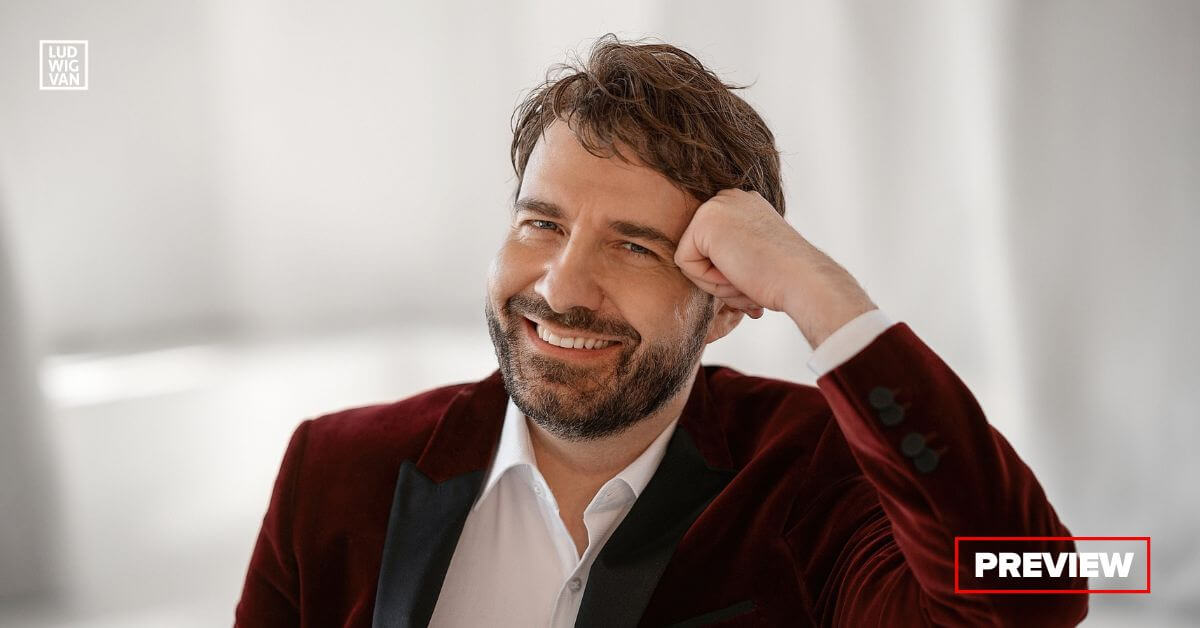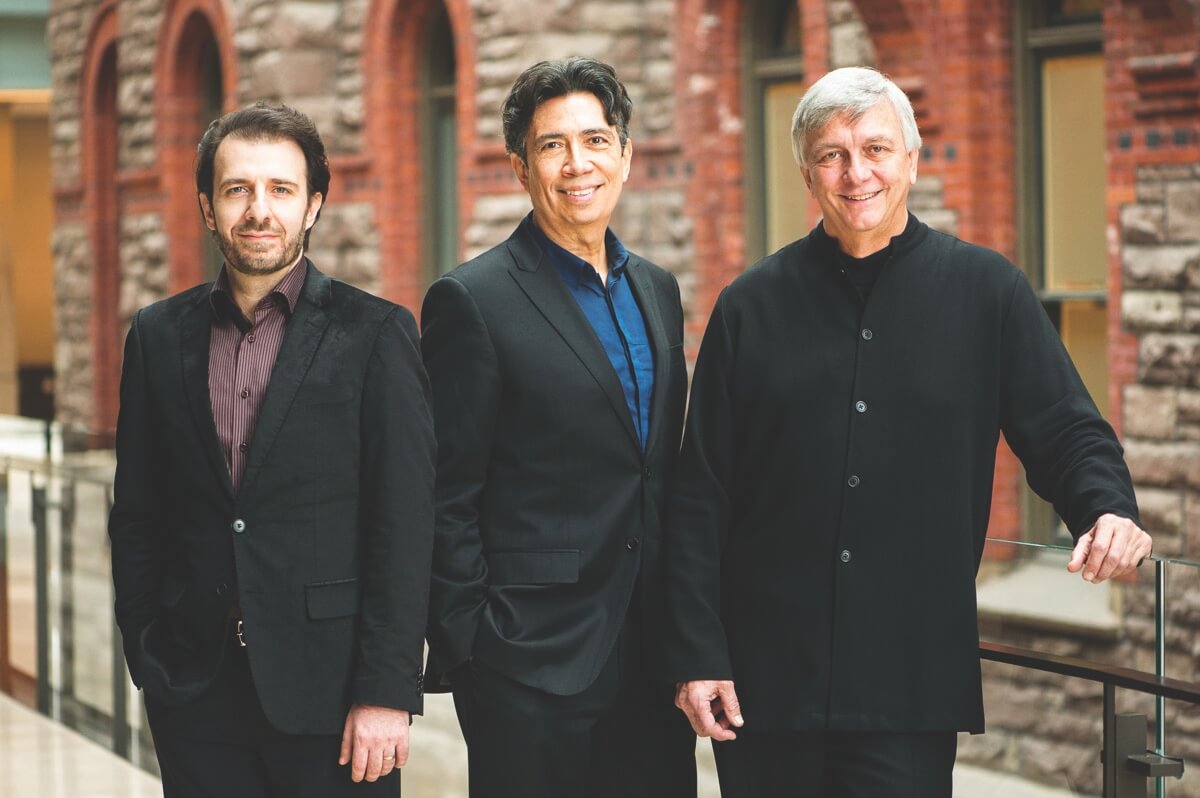
Co-artistic director of Amici Chamber Ensemble, composer of two of the pieces on the program, and pianist, you could say Serouj Kradjian’s music practice is at the heart of the program for the upcoming concert titled Diasporic Bridges. It takes place April 28.
“May I add on those duties, the fact that I’m directing the film.”
Along with the remaining members of Amici, Joaquin Valdepeñas, clarinet, and David Hetherington, cello, performers for the concert include mezzo-soprano Rebecca Cuddy, soprano Aline Morales, violinists Erika Raum and Tiffany Yeung, violists Barry Shiffman and Steven Dann, guitarist Rob MacDonald, and percussionist Naghmeh Farahmand
DIASPORIC BRIDGES: A celebration of Toronto’s cultural diversity
As an artist, Serouj blurs the boundaries between genres and cultural traditions, a central thread in the program, which includes music and an original film.
Music is the bridge that weaves traditions together to create something new. Toronto’s diverse multicultural communities serve as the inspiration for the concert.
On the program:
- Christos Hatzis — Anaktoria
- Serouj Kradjian — Bachianas Bossa-Tangos
- Gideon Klein — String Trio
- W.A. Mozart (arr. Kradjian) — Rondo Alla Libanesa
- Alexina Louie — Bringing Down The Tiger From The Mountain
- Paco de Lucia (arr. Kradjian) — Zyryab
- Roberto Sierra — Songs From The Diaspora
- Ana Sokolovic — Serbian Tango
- Florence B. Price — Adoration
- Antoine Gerin-Lajoie — Un Canadien Errant
The themes of cultures coming together as a musical community is one that Serouj has been developing for a while. “It has preoccupied me for a long time,” he said. “One thing that I do very well is mixing different styles.”
With a background and education steeped in Western classical music, he views the repertoire as part of a common well of creativity, one without borders to style or ethnicity.
“[There are] no borders between the different types of music that I’ve heard,” he says.
The pieces he’s composed that appear in the program are evidence of his aesthetic. Bachianas Bossa-Tangos is based on the Bachianas Brasileiras suites by Villa-Lobos. “It’s usually done with eight celli and the voice,” he notes. “I put the Bossa Nova twist to it, and the tango rhythm.”
Into it is mixed “a little toccata and fugue by Bach”, and a vocalist singing what he’s calling gibberish, along with an accordion, and the tone is unexpected and new. But, it’s background and pedigree don’t need to be known in advance. “In a way, I want to transmit this message, that you don’t need to understand the language for you to feel moved by the music that you hear.”
His Rondo Alla Libanesa is based on the music of his childhood. Born in Lebanon into an Armenian family, he grew up during the civil war period.
“There were two things which, as a kid, made me forget what was happening outside,” he says. “One was Mozart, and the other was Fairuz.” The latter was known as the Queen of Lebanese song. He took one of her songs, and mixed it with Mozart’s Rondo alla Turca — a late 18th century example of genre blending.
“The mixture became Rondo Alla Libanesa.” Both styles of music weave into each other, beginning with Mozart’s classicism, then introducing Arabic melodies, rhythms, and harmonies. “It weaves both styles.”

The world of Western art music is no stranger to the blurring of genre boundaries, from Mendelssohn’s Scottish Symphony to Liszt and his Romani music. Madama Butterfly was lauded at its premiere for the influence of the far east. “It’s always been there. It’s stayed in the European tradition […] but now we have a chance to spread our wings even more.”
There is a responsibility to use authentic sources for inspiration, but Serouj rejects any calls for strict adherence to traditions or techniques. “I am kind of over that. My passion is really re-imagining and building bridges.”
The short film that will premiere at the concert begins with his own experience. “I have two identities, the Armenian one and the Lebanese one,” he says, “neither here, nor there.”
As an immigrant to Canada, now a third identity, he notes a preoccupation with keeping the traditions of the homeland alive. Music fills that need as something that can be transmitted from generation to generation. The film explores those ideas, using Toronto’s famously diverse neighbourhoods — Little Italy, Greektown, Chinatown, and so on — as inspiration. He was also struck by the role of women in preserving traditions and culture.
Larysa Kuzmenko’s piece Tetiana’s Journey to a New World is a personal story in music. The new work is inspired by the tragedy that is occurring in Ukraine, about a woman who escapes to Canada with her children. The titular Tetiana is now a music teacher in Toronto. “It’s a journey to a new life,” he says. “It was amazing to see that coming to life.”
Sometimes, blending musical traditions involves some creative thought. The sitar, in Indian music, comes from a tradition of largely improvised music, in contrast with contemporary classical music, which has virtually eliminated improvising. “He doesn’t read Western notation, and I don’t read Indian notation… that was a challenge,” he says. Serouj found a way for it to work. “Give me your improvisation, and based on the structure, I will write something down,” he recalls. “It was perfect, because no one depended on the other to react.”
Alexina Louie’s piece creates music based on Chinese Tai Chi moves, with Ana Sokolovic’s Serbian Tango, and Adoration by Florence B. Price, incorporating African-American musical elements. Christos Hatzis Anaktoria uses lyrics based on the words of Greek poet Sappho. There are Armenian songs, and a piece about the displacement of the Acadians.
They come from different experiences — those who immigrated by choice, vs. those who escaped a bad situation vs. Indigenous people who were essentially displaced in their own country.
“The film is about all these different ways of looking at the diaspora.”
- Find more information about the concert on April 28, and tickets, [HERE].
Are you looking to promote an event? Have a news tip? Need to know the best events happening this weekend? Send us a note.
#LUDWIGVAN
Get the daily arts news straight to your inbox.
Sign up for the Ludwig Van Toronto e-Blast! — local classical music and opera news straight to your inbox HERE.
- PREVIEW | SUMMER OPERA LYRIC THEATRE Presents Handel’s Xerxes, Mozart’s Idomeneo & Puccini’a La Boheme July 26 To August 4 - July 26, 2024
- PREVIEW | YENSA Festival V.2 Offers Black Flames Performances & Other Ways To Celebrate Black Women In Dance - July 25, 2024
- PREVIEW | Canadian Talent Conspicuous In The Met: Live In HD 2024-25 Season - July 25, 2024



